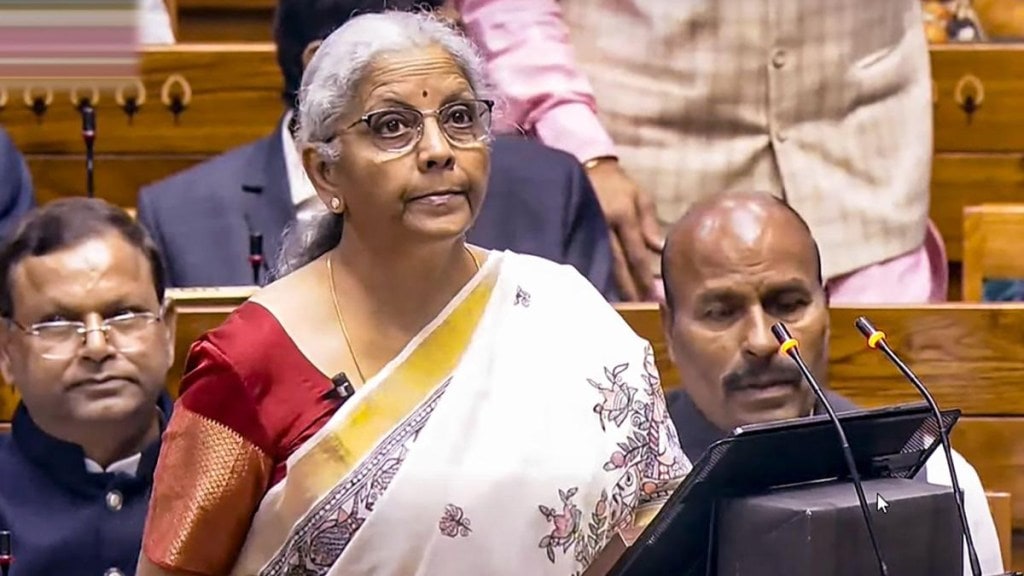By Commodore (Dr) Johnson Odakkal, Indian Navy (Retd)
For many taxpayers in India, particularly the salaried class, the 2025 Budget brings cause for celebration. With a tax-free income threshold of Rs 12 lakh annually, individuals earning up to Rs 1,00,000 per month can now take home their full salaries, free of tax liabilities. This fiscal relief will provide much-needed breathing space, allowing for greater disposable income and economic participation. While the personal tax revisions uplift millions, can the same be said for India’s defence sector? Does this budget provide the robustness needed for a modern, agile, and technologically advanced military, or does it remain anchored in sustaining operational costs?
Defence Budget Trends and Allocations
The Defence Budget 2025-26 was presented with a total allocation of Rs 4,91,732 crore, accounting for 8% of the total central government expenditure. This marks an increase from the revised estimate of Rs 4,70,000 crore in 2024-25. However, a closer look at its composition raises pertinent questions. Rs 3,94,000 crore (80%) is earmarked for revenue expenditure, covering salaries, pensions, maintenance, and operational costs of the armed forces. Meanwhile, capital expenditure, which is crucial for modernisation, infrastructure, and technological upgrades, is set at Rs 97,732 crore (20%).
Can the defence sector break free from this overwhelming reliance on revenue allocations? Countries like China and the United States continue to direct a significant share of their military spending towards research, innovation, and long-term capital projects. India, on the other hand, finds itself navigating a recurring cycle of high operational spending, leaving only a fraction of the budget for transformative growth.
How Does India’s Defence Spending Compare Globally?
With an allocation of $59 billion, India remains among the top five military spenders globally, but the spending structure is skewed towards personnel costs rather than modernisation. In contrast, China’s $225 billion budget has been structured to invest aggressively in AI-driven warfare, naval expansion, and missile development. The United States, with its $842 billion defence budget, leads global military innovation, allocating a substantial portion to cyber defence, drone warfare, and hypersonic weapons.
European nations like France, Germany, and the UK also follow a capital-intensive model, with sustained investments in next-generation fighter jets, space-based defence systems, and high-tech military applications. India’s limited capital allocation (20%) may hinder its ability to keep pace with global technological advancements, making it imperative to reassess priorities.
Self-Reliance: A Step Forward, But Is It Enough?
A key focus of this budget is the continued push towards indigenous defence manufacturing under the Atmanirbhar Bharat initiative.
Steps include:
Expansion of Defence Industrial Corridors in Uttar Pradesh and Tamil Nadu.
Enhanced incentives for domestic procurement of weaponry, fighter jets, and drones.
Increased support for private sector defence participation.
Revised FDI policies to encourage foreign investments in defence manufacturing.
While these initiatives are encouraging, their success depends on streamlined procurement processes, accountability in execution, and sustained multi-year capital investment. The Indian military has historically faced delays in defence acquisitions, making it crucial that these reforms translate into actionable, on-ground improvements.
Border Infrastructure, Cybersecurity, and Maritime Security
A notable aspect of this budget is the enhanced investment in border security and maritime capabilities. Given India’s strategic challenges along the China and Pakistan borders, a portion of the capital outlay will be used for:
Road and airstrip development in forward areas.
Strengthening of surveillance and air defence systems.
Expansion of the Navy’s fleet to counter growing security concerns in the Indian Ocean Region.
Investments in cybersecurity and space-based surveillance technologies.
The focus on border infrastructure and naval expansion is in line with India’s geopolitical and strategic needs. However, defence experts continue to stress the importance of long-term capital infusion to sustain these developments beyond short-term budgetary cycles.
A Better Way Forward
While budget allocations indicate intent, the real challenge lies in effective execution. Addressing inefficiencies in capital outlay utilisation is paramount, as past budgets have shown underutilisation of funds in defence acquisitions and modernisation efforts.
Some practical steps forward include:
Multi-year financial planning: Instead of fluctuating capital allocations, a structured roadmap with rolling five-year defence spending commitments could help ensure stability.
Procurement process optimisation: Simplifying bureaucratic hurdles in acquiring defence technology could prevent further delays.
Increased defence R&D investment: India’s spending on military research and emerging technologies lags behind major global powers. A shift towards self-sufficient R&D capabilities would strengthen long-term readiness.
Accountability measures for unused budgets: Establishing a transparent tracking system for defence capital expenditure can help prevent inefficiencies and underutilisation.
Vision for a Stronger Future
As India moves towards becoming the third-largest economy and works towards its Viksit Bharat 2047 vision, its defence strategy must evolve beyond sustaining what exists. A bold vision is required to build a technologically superior, modern, and self-sufficient military force.
While operational readiness remains essential, long-term resilience calls for consistent investment in next-generation technologies, an expanded capital allocation, and deeper reforms in procurement and R&D. India’s geopolitical aspirations and security challenges necessitate a proactive, technology-driven approach that goes beyond incremental upgrades. Without such a shift, India risks falling behind global defence leaders at a time when strategic autonomy and self-reliance are more critical than ever. The real question is whether post budget action will rise to this challenge or continue prioritising short-term operational expenditures.
The author is an Indian Navy Veteran and Adjunct Research Faculty (Strategic & Security Studies) at Naval War College, Goa.
Disclaimer: Views expressed are personal and do not reflect the official position or policy of FinancialExpress.com Reproducing this content without permission is prohibited.
